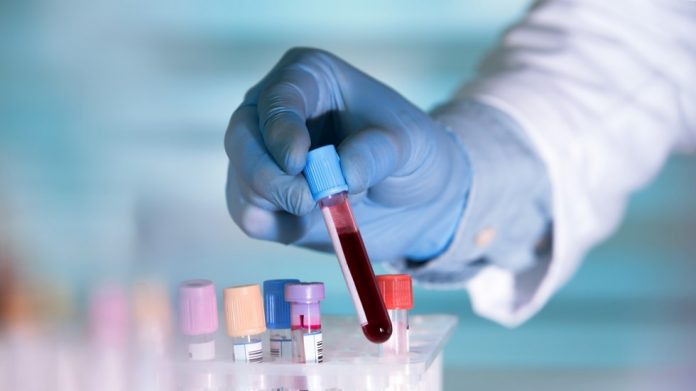Although doctors can use brain scans or spinal taps to detect Alzheimer’s in patients with symptoms, there’s no way to test for the disease in seemingly healthy individuals. Yet Alzheimer’s can degrade the brain for years—even decades—before a person recognizes anything is wrong. The inability to detect Alzheimer’s early is one main reason pharmaceutical companies have not been able to develop a drug to combat the disease, which is the most common form of dementia.
Researchers from Washington University at St. Louis and the German Center for Neurodegenerative Diseases in Tübingen have developed a simple blood test that shows evidence of brain damage due to Alzheimer’s almost seven years before any kind of cognitive changes occur. Theoretically, this test could be used to find patients who will go on to develop the disease, so that in the near future they could be enrolled in drug trials, and in the long term, could be saved from developing dementia. Their work was published (paywall) Monday (Jan. 21) in Nature Medicine.
The study involved a group of people in the Dominantly Inherited Alzheimer’s Network. This network is made up of people with one of three genetic mutations that guarantees they will develop Alzheimer’s early and some of their family members who do not have any of those mutations. In total, only about 1% of Alzheimer’s cases are caused by one of these three single mutations.
Researchers took samples of blood from 243 people who had one of the mutations and 162 who did not, all in their in their 40s or 50s, once every three years or so, for six to nine years. They looked at levels of a protein called “neurofilament light chain,” which gives structural support of neurons. Although scientists don’t know much about these proteins, high levels of them in the blood typically indicates brain damage. They’ve shown up in the blood of college football players after a season of playing (paywall), and in the blood of people with Alzheimer’s and other forms of dementia (paywall).
Everyone in the study had some amount of neurofilament light chain in their blood, and tended to develop more over time. However, people who had the dominantly inherited Alzheimer’s gene started accumulating more of the protein in their blood at a faster rate than those without the gene.
Dominantly inherited Alzheimer’s develops predictably, so scientists have a good idea of when patients will start to show symptoms. The research team found that people with one of the predictor mutations tended to have higher levels of neurofilament light chain in their blood starting about six years and nine months before dementia symptoms should have shown up, based on predictions. Their family members without the mutations had lower levels of neurofilament light chain at that point. (Eventually, scientists may be able to identify the exact amount of neurofilament light chain in the blood that predicts Alzheimer’s, but this wasn’t a large enough study to establish that level.)
The team also performed brain scans and cognitive tests on 39 people in the study with dominantly inherited Alzheimer’s, about every two years after the study began. Sure enough, higher levels of neurofilament light chain in the blood correlated with worse memory and executive function, and degradation in a part of the brain associated with memory.
This blood test has yet to be approved by the US Food and Drug Administration. Brian Gordon, a radiologist and psychologist at Washington University who co-authored the paper, said in a statement that he imagines it’ll be only a few years before doctors can give it to their patients, or use it in clinical trials.








